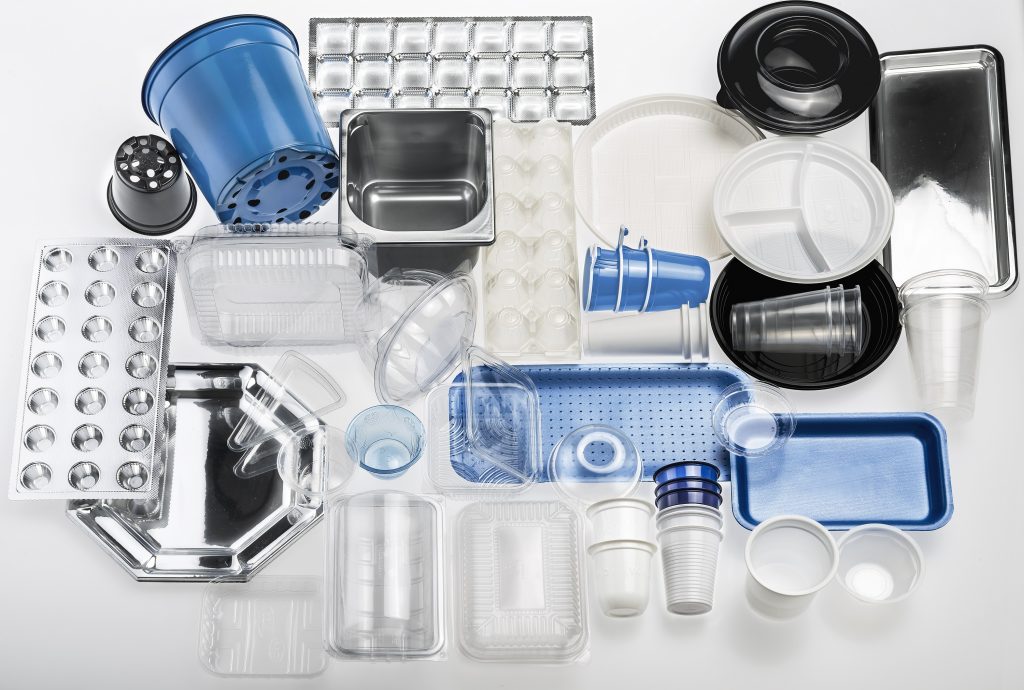
11 Nov PLASTIC OR PAPER? THE MOST SUSTAINABLE CHOICE
THE THEME OF SUSTAINABILITY IS GETTING MORE AND MORE IMPORTANT. CONSUMERS WANT TO MAKE A CONSCIOUS PURCHASE, BUT THE QUESTION IS: CAN WE REALLY CONSIDER PAPER MORE SUSTAINABLE THAN PLASTIC?
In recent years, many manufacturers have decided to switch to paper packaging as public opinion considers it as more sustainable. But is it really so?
Are paper straws, wooden sticks and paper plates really more sustainable for the environment? The answer is not obvious, since even though paper is biodegradable and therefore more ecological, it is treated with many non-ecological substances, such as chlorine and inks, which are not environmentally friendly or healthy for people. Moreover, the food in plastic packaging resists more, as they have excellent protective properties, ensure the pureness of what’s inside, are reusable and can be recycled an unlimited number of times.
It’s not only an ecological problem, but also of sustainability, as paper is not a sustainable solution since we should clear entire forests to completely replace the use of plastic in the world. Furthermore, the energy usage for paper recycling is much more expensive than for plastic recycling.
On the other hand, plastic is also coming from oil, a limited and non-renewable resource. Precisely for these reasons, implementing a recycling process that is optimized and efficient is very important.
So, which is the most sustainable solution?
Let’s start with the study conducted for the American Chemistry Council, a methodological tool that can help us understand which solution is to choose from an environmental point of view. Starting from the production of flexible packaging we see the Life Cycle Assessment (LCA). LCA is a method, standardized by ISO 14040 and ISO 14044, which allows to quantify the potential environmental impact related to a product, process or service. The study is divided into four phases and the most used materials in the packaging sector are taken into consideration.

The study analyzes two possible scenarios: the first saying of “no decomposition” in which the decomposition of material in landfill is not considered and the second saying of “maximum decomposition” in which the maximum possible decomposition of the material in landfill is considered.
The results for the US and Canada show that plastics have less impact than alternative packaging. The main reason is its extreme lightness. In fact, much more kg of replacement packaging is required for the same type of packaging. In fact, it is estimated that at least 4 times the weight of alternative material is required to produce a product with the same purpose.
The same goes for energy consumption, it takes less energy and less water consumption to produce 1 kg of plastic compared to 1 kg of alternative materials.
And how does the recycling of paper and plastic works?
And how does the recycling of paper and plastic work?
Paper-based packaging is the most recycled in Europe and, comparing virgin and recycled material, the latter proves to be more sustainable. In fact, its production requires up to 60% less energy and up to 70% less water than that of virgin material. However, paper and cardboard can only be recycled 5-7 times as their fibers lose length and quality with each processing, making it necessary to constantly add new wood fibers.
While for plastics, once PE, PET and PP are collected, they are separated, melted at high temperatures and transformed into granules to be used as raw material in new productions. However, it is important to distinguish between recyclable plastic and recycled plastic: the first is composed by virgin material, just introduced into the production cycle, while the second one is a material that comes from recycled sources, therefore already used in previous productions, collected and reused. From a sustainability perspective, the latter is undoubtedly preferable.
What about Bioplastics?
Theoretically, they should be sustainable materials better than classic plastic from an environmental point of view, but unfortunately most of the time they are not. In fact, within an efficient recycling process, conventional plastic is currently more sustainable, because it can be reused countless times.
According to the definition of the European Bioplastics, bioplastics to be such must have at least one of the following characteristics:
- have a biological basis, so it must derive from biomass
- be biodegradable
Bioplastics are produced wholly or partially from renewable raw materials, such as corn or sugar cane, whose cultivation is usually not so much sustainable. Sugar cane, for example, is grown in countries such as Brazil, South Africa and Cuba where vast areas of tropical forest are cleared to make room for plantations. Furthermore, plastics derived from biomass have lower performance than classic plastics and are more difficult to recycle, thus having a negative impact on the calculation of their sustainability.
For biodegradable plastics the situation is even more difficult. To give an example of bioplastic, polyathide (PLA), also known as polylactic acid, is composed of corn starch and lactic acid and, unfortunately, also in this case, the raw materials often do not come from sustainable crops. In addition, unless the word “compostable” is present, the PLA object cannot be disposed of in the organic waste bin, but must be placed in unsorted waste. In fact, even when bioplastics manage to be effectively degraded, the recycling of conventional plastics and their repeated use is still less expensive and more sustainable than the loss of material through composting.
Our conclusion
In conclusion, we can think that the most ecological choice is to use recycled plastic, in this way we will be able to have a virtuous economy. In fact, we would not use limited resources in nature, we would consume less energy for recycling, we would not pollute the planet (with the possibility of theoretically reusing the material indefinitely) and we would have better preserved food with high quality standards!
What do you think of it? Answer us on social networks!




